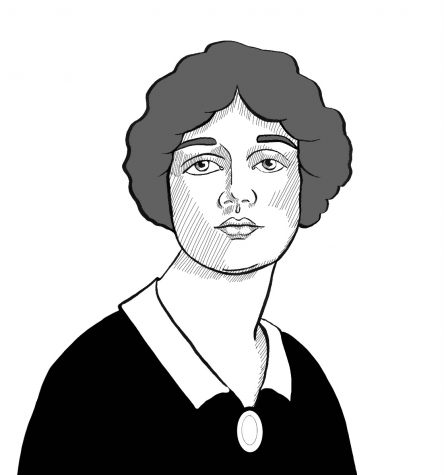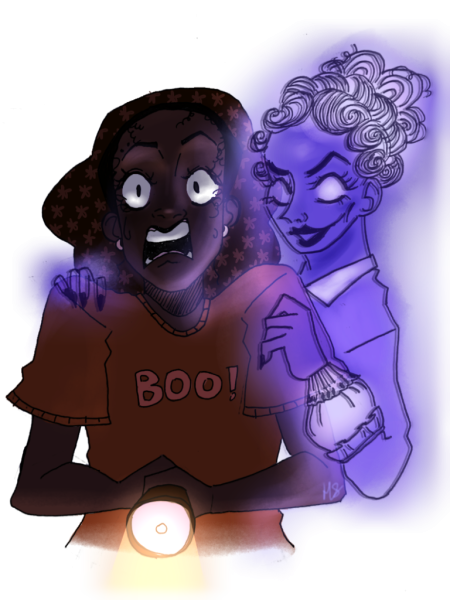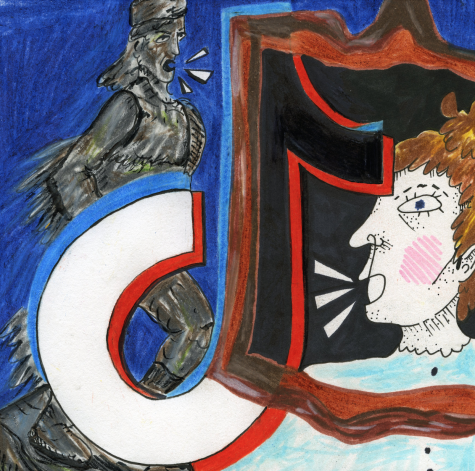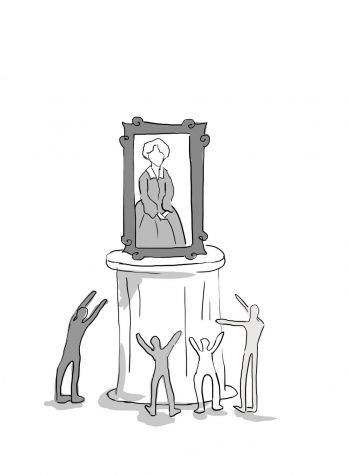Narcissa Whitman monument outside Prentiss quietly removed
February 18, 2021
In December, the stone monument to Narcissa Whitman next to Prentiss Hall was digitally archived, removed sans public announcement and met with little notice.
Before removal, a digital archive entry pairing photographs with plaque acquisition details was created in the Whitman College Northwest Archives. Ben Murphy, the head of Digital Services, said in an email to The Wire that the stone was “far too large and heavy for us to handle.”
According to Provost and Dean of Faculty Alzada Tipton, input from the Whitman College Advisory Council for CTUIR Collaboration (WCACCC) and the Inclusion Task Force influenced the decision.
“The Cabinet made the decision to remove the plaque last August after concluding that it did not contribute to a welcoming campus environment for all of our students,” Tipton said in an email to The Wire.
WCACCC members divulged that the decision was not unanimous.
“The Cabinet was split between those who wanted to remove the Narcissa plaque right away, and those who wanted to wait to remove it until the Walla Walla City Council decided to remove the Marcus Whitman statue,” Indigenous Peoples Education and Culture Club (IPECC) Co-President Erica Keevama (from Poh-Woh-Geh Owingeh) said in an email to The Wire.
Both Keevama and Cheysen Cabuyadao-Sipe — who is Kanaka Maoli (Native Hawaiian) and an IPECC leader — agreed that cutting down the settler-colonial memorial was a good move, but speculated on the unannounced execution.
Cabuyadao-Sipe said one likely factor was the recent outcry from Walla Walla community members against the proposed removal of the Marcus Whitman statue; publicizing Narcissa’s sliced monument “probably would have had backlash.”

Along with IPECC’s call for more Indigenous programming and outreach to Indigenous faculty, staff and students, Cabuyadao-Sipe personally suggests planting native flora where the Narcissa monument stood, something “that aligns with the land acknowledgment, that this land that we are currently residing in belongs and continues to belong to the Indigenous and Native people who inhabited and still inhabit this land.”
Keevama co-authored “A Proposal to Recontextualize the Marcus Whitman Statue,” borne from multiple instances of red paint sprayed across his hand, which holds a Bible. The document recommended the Narcissa monument be removed from the “public eye” before Fall 2020, noting that the action could be carried out “immediately with no adverse effects.”
Stan Thayne, Professor of Anthropology and Religion and WCACCC member, supported the action but urged the college community to consider the significance of a silent removal.
“Marcus is this big phallic chunk of bronze on a big stone pedestal,” Thayne said in an email to The Wire. “Narcissa, on the other hand . . . can quietly be cut and removed . . . most people didn’t even notice.”
“But Marcus: I think there would be backlash from town and from some alums and some faculty if he were simply removed, with or without an announcement,” Thayne said.
Thayne hopes the removal is followed by an official explanation, exhibit and use of the digital archive as teaching material.
He was a curator for the exhibit following the defacement of Narcissa’s portrait in 2017. “How we remove a monument is just as important as the removal itself—in some ways more important,” he said. He then included what is done next.
“The stone has been removed but it is not behind us. (We are still Whitman College, after all.) Nor should it be. Even if we remove the monuments and change the name of the college, the foundational violence of dispossession that they represent is still what enables our presence here,” Thayne said.
Professor of Biology Susanne Altermann was one of the few people to notice the stone was gone. She reflected on the college distancing from the Whitmans while remaining itself a monument to their settler-colonial legacy. In an email to The Wire, Altermann said, “If we were to change the name of the college entirely, what kind of a name represents who we think we are now?”








Evelyn Levine '15 • Apr 9, 2021 at 8:28 am
Greetings Whitman Grads and Wire Readers,
I encourage those of you outraged by the removal of this monument and other pieces of the Marcus and Narcissa Whitman memorabilia read up on the truth of the pair. First off, none of these paintings or sculptures are of the actual Whitmans. There are no photos or even sketches of the actual Marcus and Narcissa Whitman in existence. Every single one is an artistic rendering of the paltry information we have about their appearance. Have you ever noticed how different the imaginings of Marcus are? At the front of campus his statue is like Davey Crockett, all muscular and frontiersman like, while in paintings he looks serious and rather pale and gaunt. Besides these misguided false idols, anyone who even slightly scrapes the surface of the “massacre” story will know that the murders was not random or for no apparent reason. The Whitmans entered a community where healers who failed to heal sick were killed. Marcus Whitman was a doctor (very terrible doctor btw, his favorite “medicines” was calomel and iodine, mercury, and blood-letting) and while members of the Cayuse and other tribes were dying from the Smallpox that were brought in from other missionaries and settlers he was aware his life was on the line. Not only this, but the Whitmans caché as honest missionaries trying to spread the word of god and whatnot should be easily discredited by the fact that in the decade or so they were in the valley they NEVER BAPTIZED A SINGLE INDIGENOUS PERSON. They went around telling everyone they were living their lives in sin, roping them into religious services day and night, trying to get them to shift to farming but never thought anyone was worthy enough to be baptized. And, when Marcus realized he failed to be the missonary he had hoped to become, he decided his destiny was to settle and claim the valley, inviting western expansion into the area, further destroying the indigenous communities. I wholeheartedly agree that the college should be teaching the actual history of the Whitmans and the Whitman Massacre because even proliferating the Whitman College name gives undue credit to the ignorant land-hungry pair. For anyone interested in learning more about the Whitmans, a book came out recently called “Unsettled Ground: The history of the Whitman Massacre and its shifting legacy in the American West” by Cassandra Tate that goes into detail about the Whitman’s journey west and their eventual murders, with the letters and other documentation. It should be required reading for every Whitman student.
RICK CHATHAM • Mar 1, 2021 at 5:51 am
Wow. Really shocked by this. Previous decisions have engaged the entire community in discussion. It feels like the college is failing in contextualize the Whitmans. When I was there in 2000 there was no effort to teach about them at all. Just an undercurrent of them being terrible people. The college is failing in teaching about its namesake. Also, it’s great to let 18 year olds have a voice, but they still need direction and guidance.
Leonard John Nelson • Feb 26, 2021 at 8:05 pm
This was inevitable. My uncle graduated from Whitman. I attended Whitman in 1967-1968, but then transferred to the UW. The education I received at Whitman was excellent. But the place was a bit of a puzzle to me. It was named after Christian Missionaries that were massacred by The Cayuse Indians for no apparent reason. We went out to Waiilatpu for a day and it was sort of interesting. But the school was in no sense a Christian institution. It was hard for me to figure out what to make of it all. That year the grace that was sung at the beginning of meals in Jewett Hall was eliminated because some agnostic student did not like it. I liked it, but nobody asked me. By that time the place was in no sense a Christian institution. I met a lot of agnostics and atheists, but not many Christians. I was an Episcopalian and would have been comfortable in a more Christian environment, but it was not to be found. In fact, the place was awash drugs and the social life was abysmal. And the males had little respect for the females on campus.
Norma • Feb 26, 2021 at 7:46 pm
Why destroy what can be used as “teaching” subjects about local history? And for the native people who seem to be of such concern, why not just add “teaching” subjects alongside what is already there? Why do people have to go so far as to be sneaky? Find a common community way to work things out.
Patrice Thayer • Feb 26, 2021 at 6:29 pm
We live just a few blocks from Whitman College. Beautiful grounds and much history of the college itself. Remember when the teams were called the “Missionaries?” Bringing truth to light is wonderful, as long as it’s the WHOLE TRUTH AND NOTHING BUT THE TRUTH. Various people use their own versions of truth – as is obvious by the statement made by Stan Thayne, Professor of Anthropology and Religion. Really? Calling Marcus Whitman’s statue a “big phallic chunk of bronze”?? Sounds like a teenager’s tantrum to me. But I digress. Do the people who object to our history read Marcus Whitman’s journals about why he came to this area? It was because of the love of people. He wanted to help. t’s ridiculous to think the Whitman’s meant harm to the natives or anyone else. History is what it is. It’s best to know all of it.
Debi Kelly • Feb 26, 2021 at 10:51 am
The liberal cancel culture is ridiculous.
Richard J Bartell • Feb 26, 2021 at 10:39 am
Please fill me in on the vilifying of the Whitmans. I grew up in Walla Walla. My father is a Whitman grad. As a child, we took field trips to the Whitman Mission. Would someone be so kind as to give me the Reader’s Digest version of why the Whitmans are not view as historically significant? Cheers!
Penelope Sinclair • Feb 26, 2021 at 8:27 am
When will this end? Why are the liberals wanting to erase history? It happened. Taking down monuments, statues, plaque’s is wrong. If they are so concerned about the indigenous people trying to erase the fact that the people of Eastern European descent migrated and settled here…. sorry to inform you… they did. No amount of demolition will change history. The people that made the final decision to remove the commemorative statue are nothing but sheep that follow the collective narrative of the current bleeding heart liberals that are trying to destroy america. When are the true Americans with a backbone going to rise up and stop this selective mutilation of our past ?. Americans with backbones like the Whitmans. What next? Anything with the name “Whitman” on it must be changed? Look around. What in this area has the name “Whitman”? CHANGE IT NOW!!!! MIGHT HURT SOMEONES FEELINGS!!! PATHETIC
doug morton • Feb 22, 2021 at 1:13 pm
why not rename school after a real American hero Walt Whitman?
Then put up anew statue
Kris Dugger • Feb 20, 2021 at 10:19 am
So if the Whitman history is so bad that we have to hide it away and try to forget it then why did all people behind removing these artworks degrade themselves by attending a college named after such terrible historical figures? What next……change the name of the college to further the degradation of American history?
WAKE UP PEOPLE , it happened, all of it. You can’t hide it.
Marianne Allessio • Feb 19, 2021 at 10:52 am
This is ridiculous. All for a few. If you asked the majority you’d find it should be left where it was, which, I’m sure, is why you did it so secretly. What a shame. Whitman College continues to distance itself from the community of Walla Walla, instead of working toward a unified front. What a sham! History is history. If you remove it or rewrite it, we don’t learn.
Tammy • Feb 19, 2021 at 9:24 am
While it is true, history cannot be “changed”, the white washing of it can. These removals garner attention and discourse and hopefully cause people to reconsider what they think they know about the history taught to us when we were young. Bringing the truth to light can only be a good thing.
Sidney Pepple • Feb 18, 2021 at 11:31 pm
I am utterly disgusted with this college’s administration and board. This school
Is being run by nutcase liberals with a very narrow eye to the future or to the past. As a third generation Whitman family, my heart brakes for what the school is being turned into.
Carl stroe • Feb 18, 2021 at 6:37 pm
Unbelievable, the Whitman’s played a MAJOR part in our valley. As well as the entire northwest. History is history. You can’t change that. So sorry to hear of this development..
Bill Schwerin • Feb 18, 2021 at 2:10 pm
This is getting out of hand we are sticking or collective heads in sand